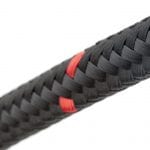American scholar Clayton M. Christensen and his colleagues defined the term “disruptive innovation” in 1995 as an innovation  that creates a new market and displaces an existing one. As advances in technology over the past few decades have piled one breakthrough on top of another, the term “disruptive technology” has become part of our vocabulary as well.
that creates a new market and displaces an existing one. As advances in technology over the past few decades have piled one breakthrough on top of another, the term “disruptive technology” has become part of our vocabulary as well.
While smartphones, the Internet, global positioning satellites and others technologies have disrupted both the consumer and commercial markets in many ways, this tidal wave of technology that’s been building for the last few decades may be the biggest disruption military strategy, planning and tactics have ever faced. Robotics, automation, artificial intelligence and entirely new weapons are changing the face of military thinking.
General Robert B. Brown, Commander of the U.S. Army, Pacific, explains: “The United States Armed Forces are at a crossroads, facing both institutional and operational challenges. The character of war continues to change at a quick pace, requiring military leaders to reassess some of their core beliefs.”
Robot Swarms
You’re sitting outdoors with friends, watching the sun go down, socializing and enjoying one another’s company. It’s an idyllic picture, but it won’t last long unless you’ve lit a few citronella candles, sprayed the yard, or your own body, with mosquito repellent. Before you know it, mosquitoes are swarming all over you. You can swat a few away, but if the swarm is large enough, you’ll never get them all. Your pleasant evening outside turns into a dash to the safety of the indoors.
The Navy is thinking about swarms, too, but rather than insects, they’re concerned about hordes of small unmanned autonomous attack boats. They would be directed by a combination of human oversight and artificial intelligence. Heavily armed with rockets or torpedoes, a swarm—say, one hundred cheap, expendable attack boats—could overwhelm the Navy’s defenses. Knocking out ninety percent of the swarm may not be enough. Those remaining could deliver a death blow to an aircraft carrier and its crew of 5,000.
As a partial answer to swarm attacks, beginning in 2012 both Navy and Marine Corps helicopters have been fitted with small, laser-guided rockets designated APKWS (Advanced Precision Kill Weapon System). Flying at Mach 2.9 with a range of more than three miles, these slim (less than three inches in diameter) six-foot long missiles hit their targets 93 percent of the time, according to BAE Systems, their manufacturer. Yet, is that sufficient to stop a swarm attack?
DARPA (Defense Advanced Research Projects Agency), the instigator of so many military problem-solving innovations continues to look for new, more effective solutions. In January 2017, it announced that Raytheon will begin prototyping and testing a “smart bullet” to be used in the Multi Azimuth Defense Fast Intercept Round Engagement System (MAD-FIRES) program. The goal: to outfit conventional 20- to 40-caliber rounds with guidance systems that allow them to change course in mid-flight. This capability will allow ships to engage different kinds of targets—aerial drones, missiles, attack boats, small planes—coming from various directions.
Not limiting its interests to defensive measures, DARPA (in January 2017) invited potential vendors to begin work on its OFFensive Swarm-Enabled Tactics (OFFSET) program. The program aims to give ground troops “…an advanced human-swarm interface to enable users to monitor and direct potentially hundreds of unmanned platforms simultaneously in real time.”
Robot swarms are coming, perhaps eventually leading to machine versus machine warfare. In the meantime, scientist Aron Kisdi wrote a paper that points out the advantages of using swarm robots for a peaceful purpose—the exploration of Martian caves.
Navy Wants Robot Submarines
 The commercial sector is moving “all ahead full” with autonomous passenger vehicles that are predicted to replace human-driven vehicles in the next couple of decades. The dollars available to that disruptive tech segment has attracted robotics and artificial intelligence experts, scientists and researchers with the lure of salaries not easily matched among even our largest military contractors. As a result, a brain drain to commercial enterprise has somewhat slowed the development of military robots, including robotic submarines.
The commercial sector is moving “all ahead full” with autonomous passenger vehicles that are predicted to replace human-driven vehicles in the next couple of decades. The dollars available to that disruptive tech segment has attracted robotics and artificial intelligence experts, scientists and researchers with the lure of salaries not easily matched among even our largest military contractors. As a result, a brain drain to commercial enterprise has somewhat slowed the development of military robots, including robotic submarines.
The Navy Times recently published an article in which Rear Admiral William Merz addressed a gathering of submarine officers and military contractors. “We are making progress [with robotic submarines] but I’m tired of waiting. Give me what you have, I will take it to sea and I’ll give you feedback. You can develop and evolve, then I’ll take that to sea and give you more feedback.”
Boeing pressed forward with its 51-foot Echo Voyager in July 2017 as it prepared for its second phase of testing in the deep waters off Catalina Island. The ship is intended for surveillance, primarily, and is equipped with technology that allows it to coordinate large-scale movements with other robotic subs, and even with drones. The ship is expected to operate autonomously for months at a time.
Among other missions, the Echo Voyager and ships like it may be able to secure undersea cables that provide connectivity between nations and carry the transactions that make global commerce possible in the 21st century. A 2015 article in the New York Times pointed to the possibility that cables that carry almost all global Internet communications could be cut by bad actors, plunging the world into a morass that could cripple the world economy. The need for robotic submarines becomes ever more important in the face of such threats.
Coastal Waters Need Protection, Too
The Navy refers to coastal waters as “littoral.” Accordingly, they’ve developed a family of littoral combat ships that can patrol the waters closest to our coasts, looking for submarines and other potentially hostile vessels.
Naval operations that took place over the last several decades revealed the need for a special type of ship that could operate in littoral waters where the continental shelf drops off to deep-water, but only gradually. Navigating in the shallower waters near the coastlines of the U.S. where waters are congested with fishing and pleasure boats requires a special kind of ship. It needs to be small, fast and agile. Dubbed the Littoral Combat Ship (LCS), the Navy has now deployed these ships in two configurations. Both are designed to accept “plug and play” systems that give it special capabilities and strengths.
Read more about LCS ships.
AIP Subs Can Hide in Our Coastal Waters
Submarine designers have struggled since the inception of subs to make them quieter, less detectable and more stealthy. World War II subs ran on diesel engines when sailing at the surface, and on batteries while submerged. The need for oxygen to burn diesel fuel brought them to the surface more often than they wished so they could recharge batteries and discharge exhaust to the atmosphere. Now though, a 19th century invention has given birth to a whole new submarine technology: Air Assisted Propulsion (AIP).
The heart of such a system is a Stirling Engine, named after its inventor, Robert Stirling, a Scottish minister, who patented his concept in 1816. His engine requires only heat. Unlike an internal combustion engine, no external fuel is consumed; the engine is a closed-cycle regenerative heat engine with a permanently gaseous working fluid.
In practice, this means a sub powered by AIP can remain hidden underwater for weeks at a time. Unlike a nuclear-powered sub, that must run its pumps continuously to keep the nuclear core cool, an AIP-powered sub can lie silent in shallow littoral waters for weeks at a time.
The U.S. has not embraced AIP-powered subs as yet, however other nations have. Read more about AIP submarines and how they are changing naval operations here.
How We Can Help
New England Wire Technologies has worked hand in hand with the military for over a century. We have engaged in projects including military robotics, intelligent heads-up displays, and drone and unmanned vehicle technologies, among others.
The military and its stringent requirements for the design of electronics stand alone among other markets we serve. Military electronics need to survive combinations of extreme vibration and shock, severe temperatures and environmental conditions, including salt water contamination that would render consumer-grade and even commercial-grade electronics useless.
At our 400,000 square foot, state-of-the-art facility, located in Lisbon, NH, we provide manufacturing, R&D, quality assurance, tooling and machine fabrication coupled with our staff of engineers, scientists, and technical professionals. We continue to provide our military customers the most technologically advanced wire and cable solutions in the industry with short lead times, rapid prototyping, and unparalleled customer service. We invite you to contact us and learn how through our invaluable customer partnerships we’ve been advancing innovation for over 100 years.
Custom Design

About Our Engineers
Innovative solutions start with an experienced team of engineers, armed with the latest design tools and technology. Our focus on understanding the individual, complex challenges of our customers and designing solutions that fit, is why we have been trusted as the industry leader for over 100 years.


















